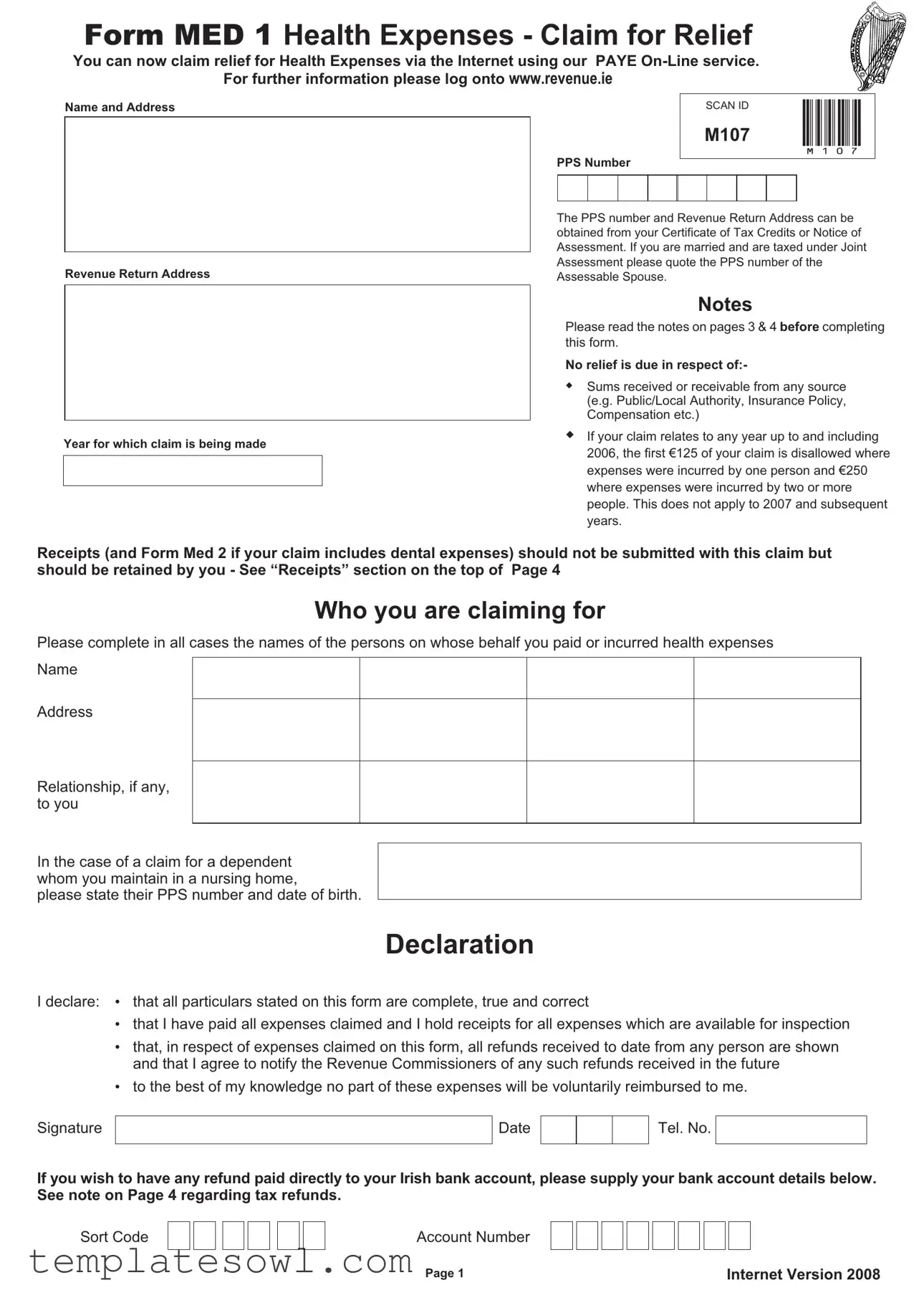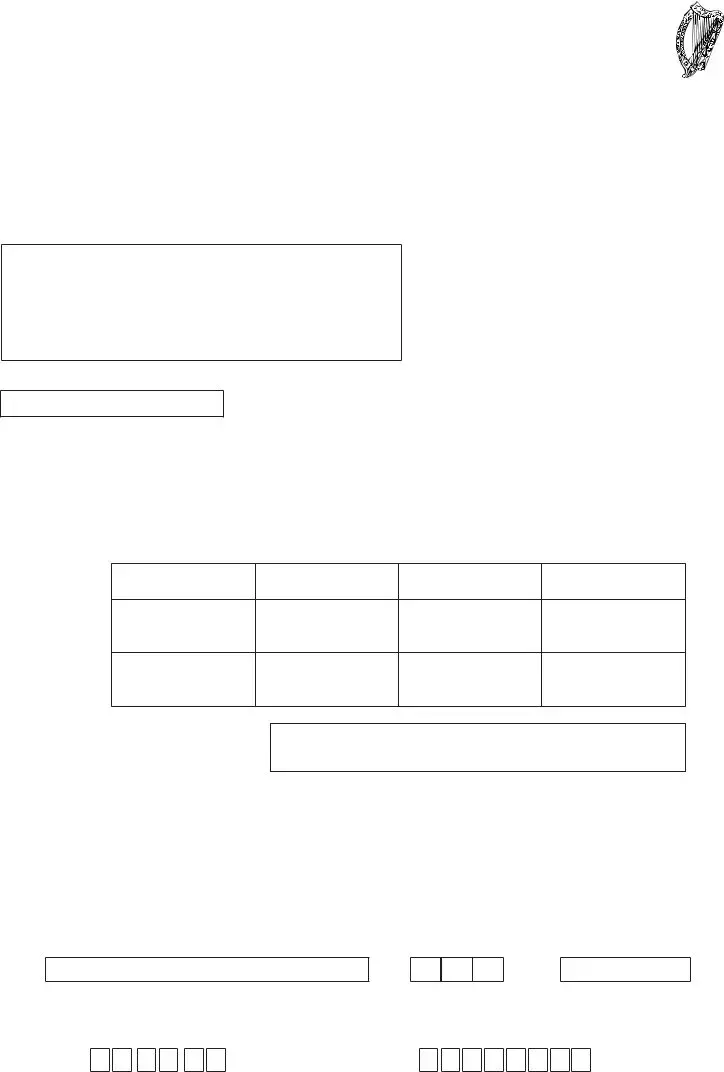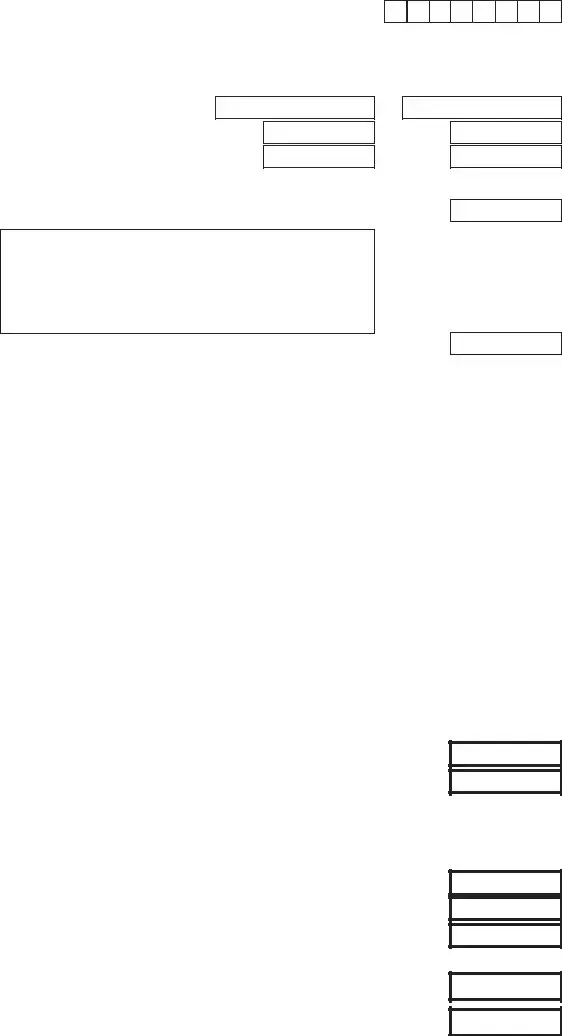Individuals for whom tax relief may be claimed
You may claim a refund of tax in respect of medical expenses paid or incurred by you:
On your own behalf
From 2007 and subsequent years on behalf of any other person (no restrictions)
For 2006 and prior years on behalf of a dependent (see definition below)
For 2006 and prior years on behalf of a relative (see definition below)
A personal representative of a deceased person can claim for medical expenses incurred by the deceased. Such expenses are treated as if they were paid immediately before the death of the deceased person.
Dependent - A dependent is defined as:
A relative of the individual, or
Any other person being -
i)An individual who, at any time during the year of assessment, is of the age of 65 years or over, or
ii)An individual who is permanently incapacitated by reason of mental or physical infirmity.
Relative - A relative is defined as:
Husband, wife, ancestor, lineal descendant, brother or sister
Mother or father of the individual’s spouse
Brother or sister of the individual’s spouse
Spouse of the individual’s son or daughter
A child, not being the child of the individual, who for the year of assessment
i)Is in the custody of the individual and is maintained by the individual, at the individual’s own expense for the whole or part of the year of assessment, AND
ii)Is under 18 years of age, OR
iii)If over 18 years of age, at the commencement of the year of assessment, is receiving full time instruction at any university, college, school or other educational establishment.
Qualifying Medical Expenses
The headings under which expenses qualify are listed on Page 2 of this form. You must have paid or incurred the amounts claimed on treatment prescribed by or on the advice of a qualifying practitioner. Drugs and medicines can only be claimed where supplied on the prescription of a practitioner.
Maternity Care - The cost of providing routine health care in respect of pregnancy is allowable.
Educational Psychological Assessment for a dependent child - Must be carried out by an educational psychologist who is entered on a register maintained by the Minister for Education and Science for the purposes of this relief in accordance with guidelines set down by that Minister with the consent of the Minister for Finance.
Speech and Language Therapy for a dependent child - Must be carried out by a speech and language therapist who is approved of for the purposes of this relief by the Minister for Health and Children in accordance with guidelines set down by that Minister with the consent of the Minister for Finance.
Consumable products - Relief can be claimed for the costs incurred on products manufactured specifically for coeliacs and diabetics where this expenditure is incurred on the advice of a medical practitioner.
Non-Routine Dental Expenses - You must hold a completed Form Med 2 (Dental), signed and certified by the dental practitioner when making a claim for non-routine dental expenses. Please do not send in the Form Med 2 with your claim - see “Receipts for Expenses Claimed” on the top of Page 4. A full list of qualifying treatments is:
Listed on the reverse of the Form Med 2 (Dental)
Available on Revenue’s website WWW.REVENUE.IE under Publications
Available from Revenue’s Forms and Leaflets service by phoning LoCall 1890 30 67 06
Available from your Regional PAYE LoCall Service whose number is listed on Page 4
Available from any Revenue Office.
Expenses that do not qualify
The cost of sight testing and the provision and maintenance of spectacles and contact lenses
Routine dental treatment which is defined as “the extraction, scaling and filling of teeth and the provision and repair of artificial teeth and dentures”.


